当前位置:网站首页>Tornado framework routing system introduction and (IOloop.current().start()) start source code analysis
Tornado framework routing system introduction and (IOloop.current().start()) start source code analysis
2022-08-02 14:28:00 【Spaghetti Mixed with No. 42 Concrete】
TornadoFramework routing system introduction and(IOloop.current().start())启动源码分析
1、前言
众所周知,Django、Flask、Tornadoare very popular threeWeb开发框架,Django大而全、flask小而精、Tornado性能高.So what are their advantages??On a variety of projects and to how should choose?
Django:
Django走的大而全的方向,开发效率高.它的MTV框架,自带的ORM,admin后台管理,自带的sqlite数据库和开发测试用的服务器,给开发者提高了超高的开发效率.
重量级web框架,功能齐全,提供一站式解决的思路,能让开发者不用在选择上花费大量时间
自带ORM和模板引擎,支持jinja等非官方模板引擎.
自带ORM使Django和关系型数据库耦合度高,如果要使用非关系型数据库,需要使用第三方库
自带数据库管理app
成熟,稳定,开发效率高,相对于Flask,Django的整体封闭性比较好,适合做企业级网站的开发.python web框架的先驱,第三方库丰富
Flask:
Flask是轻量级的框架,自由、灵活、可扩展性强,核心基于Werkzeug WSGI工具和jinja2模板引擎.
适用于做小网站以及web服务的API,开发大型网站无压力,但架构需要自己设计.
与关系型数据库的结合不弱于Django,而与非关系型数据库的结合远远优于Django.
Tornado:
Tornado走的是少而精的方向,性能优越,它最出名的异步非阻塞的设计方式.
Tornado的两大核心模块:
iostraem:对非阻塞的socket进行简单的封装.
ioloop:对I/O多路复用的封装,它实现一个单例.
2、tornado介绍
Tornado 是一个Python web框架和异步网络库 起初由 FriendFeed 开发. 通过使用非阻塞网络I/O, Tornado 可以支持上万级的连接,处理 长连接, WebSockets, 和其他 Apps that require a permanent connection to each user.
Tornado can be roughly divided into4个主要的部分:
web框架 (包括创建web应用的 RequestHandler 类,There are many other supported classes).
HTTPclient and server implementation (HTTPServer and AsyncHTTPClient).
异步网络库 (IOLoop and IOStream), 为HTTPComponents provide building blocks,Can also be used to implement other protocols.
协程库 (tornado.gen) Allows asynchronous code to be written more directly without chaining callbacks.
Tornado web 框架和HTTP server 一起为 WSGI Offers a full-stack option. 在WSGI容器 (WSGIAdapter) 中使用Tornado webframe or useTornado HTTP server as an otherWSGI框架(WSGIContainer)的容器,Such combinations are limited. 为了充分利用Tornado的特性,you need to use togetherTornado的web框架和HTTP server.
3、helloworld
import tornado.ioloop
from tornado import web
""" settings = { "debug":True} """
# 注意:
# 一旦在settings内将debug设置为True就必须以debug模式启动项目.
# and try not to terminate the project,Once the project is terminated and then restarted, the previous process will be terminated,否则会报端口占用的错误.
class MainHandler(web.RequestHandler):
def get(self):
self.write("Hello World!")
def make_app():
return web.Application([
(r"/",MainHandler)
])
if __name__ == "__main__":
application = make_app()
application.listen(8888)
print("Tornado is starting %s" %'http://localhost:8888')
tornado.ioloop.IOLoop.current().start()
You can see in the above code,首先定义了一个MainHandlerThe request processing class belowgetThe method is sent on behalf of the browserget请求,函数make_appIt is more like a route registration function,与Flask,DjangoThe route registration is not much different.调用make_app()会返回Application类的实例化对象,对象调用listen方法设置监听端口,重点则是在tornado.ioloop.IOLoop.current().start()这一句start()启动框架
4、ApplicationRoute registration source code analysis
ApplicationClass initialization method parameters is introduced
class Application(ReversibleRouter):
""" 一个组成web application的request handler(请求处理器)的集合 """
def __init__(self, handlers=None, default_host=None, transforms=None,
**settings):
# Chunking and compression of output
# Set the corresponding headerContent-Encoding和Transfer-Encoding
if transforms is None:
self.transforms = []
if settings.get("compress_response") or settings.get("gzip"):
self.transforms.append(GZipContentEncoding)
else:
self.transforms = transforms
# 默认主机(host)
self.default_host = default_host
# All the incoming loadsettings到self.settings
self.settings = settings
# ui_modules和ui_methodsare template related properties
self.ui_modules = {
'linkify': _linkify,
'xsrf_form_html': _xsrf_form_html,
'Template': TemplateModule,
}
self.ui_methods = {
}
#get get user-definedui_modules和ui_methods,and add them to the member variables created earlierself.ui_modules和self.ui_methods中
self._load_ui_modules(settings.get("ui_modules", {
}))
self._load_ui_methods(settings.get("ui_methods", {
}))
# 检查settings中有没有设置static_path(静态文件路径)
if self.settings.get("static_path"):
# 读取static_pathUsed to configure static file paths
path = self.settings["static_path"]
# 将传入的handler转换为list
handlers = list(handlers or [])
# static file prefix
static_url_prefix = settings.get("static_url_prefix",
"/static/")
# Static file processing class(默认StaticFileHandler)
static_handler_class = settings.get("static_handler_class",
StaticFileHandler)
# Static file processing parameters
static_handler_args = settings.get("static_handler_args", {
})
# Add the static file address to the processing parameters
static_handler_args['path'] = path
#passed in the parameterhandlersAdd three more mappings before:
#【/static/.*】 --> StaticFileHandler
#【/(favicon\.ico)】 --> StaticFileHandler
#【/(robots\.txt)】 --> StaticFileHandler
for pattern in [re.escape(static_url_prefix) + r"(.*)",
r"/(favicon\.ico)", r"/(robots\.txt)"]:
handlers.insert(0, (pattern, static_handler_class,
static_handler_args))
# 检测是否开启debug模式
if self.settings.get('debug'):
# After opening, make the following settings
# 自动重载
self.settings.setdefault('autoreload', True)
# uncompile template cache
self.settings.setdefault('compiled_template_cache', False)
# cancel static fileshash值缓存
self.settings.setdefault('static_hash_cache', False)
# Provide processing tracking information
self.settings.setdefault('serve_traceback', True)
# 添加路由(_ApplicationRouter)
self.wildcard_router = _ApplicationRouter(self, handlers)
self.default_router = _ApplicationRouter(self, [
Rule(AnyMatches(), self.wildcard_router)
])
# Automatically reload modified modules
# 自动重载
if self.settings.get('autoreload'):
from tornado import autoreload
autoreload.start()
Individuals are used to seeing routing registration firstApplication,Here, only the key parts of the code are selected for analysis
class Application(ReversibleRouter):
def __init__(self, handlers=None, default_host=None, transforms=None,
**settings):
········
self.wildcard_router = _ApplicationRouter(self, handlers)
""" _ApplicationRouter(self, handlers)会将Application类本身与handlers([(r"/",MainHandler)])传递给_ApplicationRouter类 class _ApplicationRouter(ReversibleRuleRouter): def __init__(self, application, rules=None): assert isinstance(application, Application) self.application = application super(_ApplicationRouter, self).__init__(rules) _ApplicationRouter类在初始化的时候,会调用父类ReversibleRuleRouter的__init__()方法 class ReversibleRuleRouter(ReversibleRouter, RuleRouter): def __init__(self, rules=None): self.named_rules = {} # type: typing.Dict[str] super(ReversibleRuleRouter, self).__init__(rules) ReversibleRuleRouter在执行__init__()方法时,又会调用父类RuleRouter的__init__()方法 class RuleRouter(Router): def __init__(self, rules=None): self.rules = [] # type: typing.List[Rule] if rules: self.add_rules(rules) # 调用RuleRouter类下的add_rules方法 def add_rules(self, rules): # rules = [(r"/",MainHandler)] for rule in rules: # rule = (r"/",MainHandler) if isinstance(rule, (tuple, list)): # 判断rule是不是属于tuple类或者list类 assert len(rule) in (2, 3, 4) # 对ruleAssert the length of,长度只能在(2, 3, 4)这个范围 if isinstance(rule[0], basestring_type): # Determine if the first element of a route belongs tostr类 ''' PathMatches(rule[0])类,对"/"add regex at the end"$"使其变成"/$",PathMatchesMainly use regular expressions to match the specified request *rule[1:]取到的就是<class '__main__.MainHandler'>MainHandler对象.并且RuleThe initialization method of theHandlerCheck processing class,If a class is str则会通过import_object()method to turn it into an instantiated class(import_object('x')就相当于'import x'.),具体可在tornado.utilChinese Buddhistimport_object() 方法查看. 此时Rule(<tornado.routing.PathMatches object at 0x00000199EE24FDD8>, <class '__main__.MainHandler'>, kwargs={}, name=None) ''' rule = Rule(PathMatches(rule[0]), *rule[1:]) else: rule = Rule(*rule) ''' 注意此时的process_rule方法,在下面的代码中self.process_rule(rule)but did not callRuleRouter本身的process_rule,always remember thisself是_ApplicationRouter 类,所以他调用的是_ApplicationRouter类的process_rule方法.看如下代码 def process_rule(self, rule): # This code will call again_ApplicationRouter的父类ReversibleRuleRouter中的process_rule方法 # 在ReversibleRuleRouter中的process_ruleThe method also calls the parent classRuleRouter中的process_rule,但是父类RuleRouter里process_rule并没有对ruledo any fuck # 作,Just keep it for subclasses to inherit and override,So the key is atReversibleRuleRouter中的process_rule,He mostly did it rightrule.name的操作,rule.nameto judge whether it exists or not # named_rules中,If the print error log’有多个headlers处理程序,will replace the previous‘,the same as the previousheadler程序做个比较.如果不在就直接返回.It will continue to execute after returning # 下面代码,判断rule.target是不是属于list或者tuple,正常来说rule.target就是上面的headler对象,If it is, it will go through the above code again to re-check,不是直接返回 rule = super(_ApplicationRouter, self).process_rule(rule) if isinstance(rule.target, (list, tuple)): rule.target = _ApplicationRouter(self.application, rule.target) return rule After the following code runs, all registered routes will be traversed here,重复上面的代码,until all routes are traversed ''' self.rules.append(self.process_rule(rule)) Then all routes will be put inself.wildcard_router.rules下,Stored as a list-nested tuple as shown below: self.wildcard_router.rules = [Rule(<tornado.routing.PathMatches object at 0x00000199EE24FDD8>, <class '__main__.MainHandler'>, kwargs={}, name=None),......and so on other routes] """
# 这个是tornadoDoing the default route,不必太多关心,实际上也就是_ApplicationRouter本身,如下所示:
# self.default_router.rules = [Rule(<tornado.routing.AnyMatches object at 0x00000199EE23BF60>, <tornado.web._ApplicationRouter object at 0x00000199EDCAD320>, kwargs={}, name=None)]
self.default_router = _ApplicationRouter(self, [
Rule(AnyMatches(), self.wildcard_router)
])
5、Several officially designated routing implementation rules
tornadoInternally provides a variety of flexible routing implementation methods,Developers can choose one or more routes suitable for the project according to the routing rules in the framework,当然tornadoIt also provides developers with a way to implement their own routing classes(需要继承Router基类或者Router的子类.and must be implemented internallyfind_handler方法,used to provide a suitablehttputil.HTTPMessageDelegate实例来处理请求)
1、Implement your own routing class
class GetResource(RequestHandler):
def get(self, path):
if path not in resources:
raise HTTPError(404)
self.finish(resources[path])
class PostResource(RequestHandler):
def post(self, path):
resources[path] = self.request.body
class HTTPMethodRouter(Router):
def __init__(self, app):
self.app = app
def find_handler(self, request, **kwargs):
handler = GetResource if request.method == "GET" else PostResource
return self.app.get_handler_delegate(request, handler, path_args=[request.path])
router = HTTPMethodRouter(Application())
server = HTTPServer(router)
2、httputil.HTTPServerConnectionDelegate的实例
router = RuleRouter([
Rule(PathMatches("/handler"), ConnectionDelegate()),
# …… 更多路由
])
class ConnectionDelegate(http.HTTPServerConnectionDelegate):
def start_request(self,server_conn,request_conn):
return MessageDelegate(request_conn)
3、a callable and accepts a HTTPServerRequest object of class parameter
router = RuleRouter([
Rule(PathMatches("/callable"), request_callable)
])
def request_callable(request):
request.write(b"HTTP/1.1 200 OK\\r\\nContent-Length: 2\\r\\n\\r\\nOK")
request.finish()
4、RuleRouter内嵌套RuleRoute或Application也是可以的
router = RuleRouter([
Rule(HostMatches("example.com"), RuleRouter([
Rule(PathMatches("/app1/.*"), Application([(r"/app1/handler", Handler)]))),
]))
])
5、路由分发
app1 = Application([
(r"/app1/handler",HandlerClass1)
# other router
])
apps = Application([
(r"/app1/handler",HandlerClasss)
# other router
])
router = RuleRouter([
Rule(PathMatches("/app1.*"),app1),
Rule(PathMatches("/app2.*"),app2),
])
6、初始化HTTPServer
由上面代码可知,再application实例初始化之后,application调用listen方法
- application.listen源码
def listen(self, port, address="", **kwargs):
""" start a port for this application on the given port HTTP服务 """
from tornado.httpserver import HTTPServer
# 创建一个HTTPServer的实例
server = HTTPServer(self, **kwargs)
# 调用实例的listen方法,And to the port and addresslisten.So it can be seen thatlisten方法实际上是HTTPServer的父类TCPServer下的
server.listen(port, address)
# # 返回这个HTTPServer实例
return server
- 官方HTTPServe注解的源码
1、listen: Simple single process
server = TCPServer()
server.listen(8888)
IOLoop.current().start()
2、bind/start: More than a simple process
server = TCPServer()
server.bind(8888)
server.start(0) # Number of multiple child processes
IOLoop.current().start()
3、add_sockets: Advanced Multiple Processes
sockets = bind_sockets(8888)
torbado.process.fork_process(0) # 子进程数量
server = TCPServer()
server.add_sockets(sockets)
IOLoop.current().start()
9、IOloop.current().start()启动源码分析
# 待更新
边栏推荐
猜你喜欢
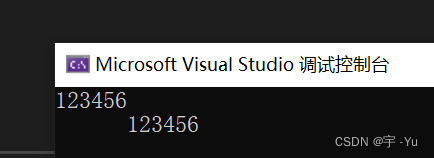
C语言日记 7 输入/输出格式控制

C语言日记 5、7setprecision()问题

C语言日记 6 基本输入/输出
ROS通信 —— 节点,Nodes & Master](/img/f5/c541259b69a0db3dc15a61e87f0415.png)
[ROS](05)ROS通信 —— 节点,Nodes & Master

Camera Hal(Hal3)层修改Preview流
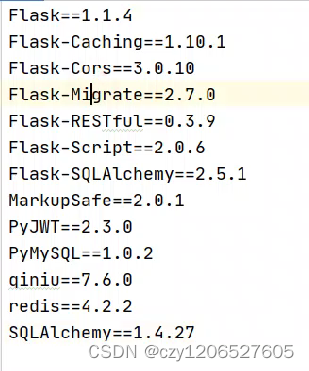
Creating seven NiuYun Flask project complete and let cloud
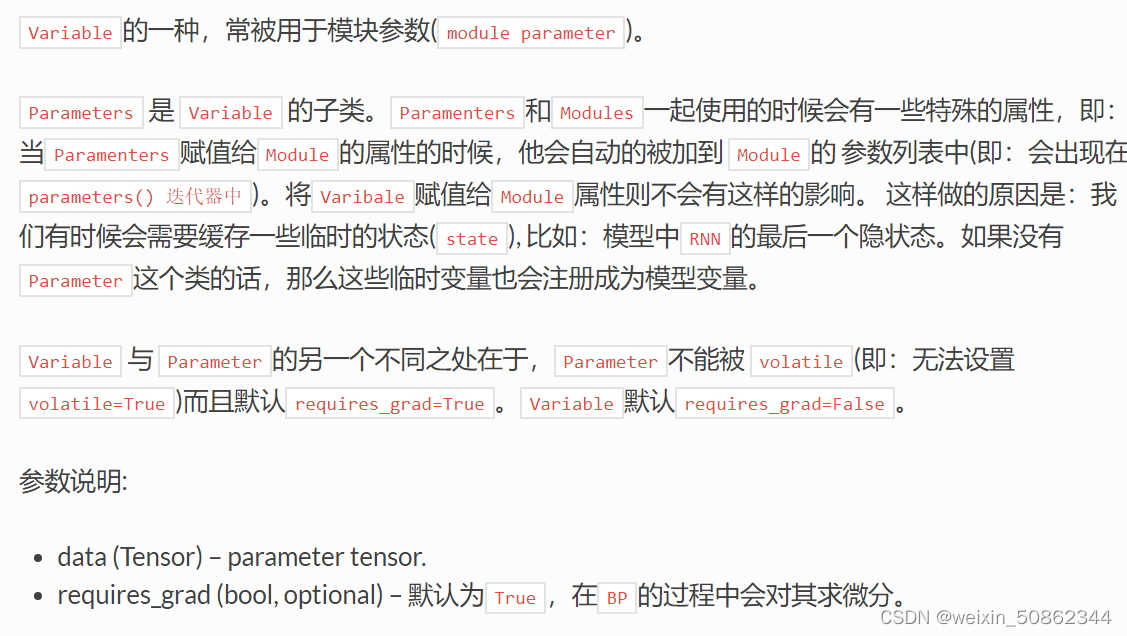
Deep learning framework pytorch rapid development and actual combat chapter4

c语言用scanf出错不安全的解决办法
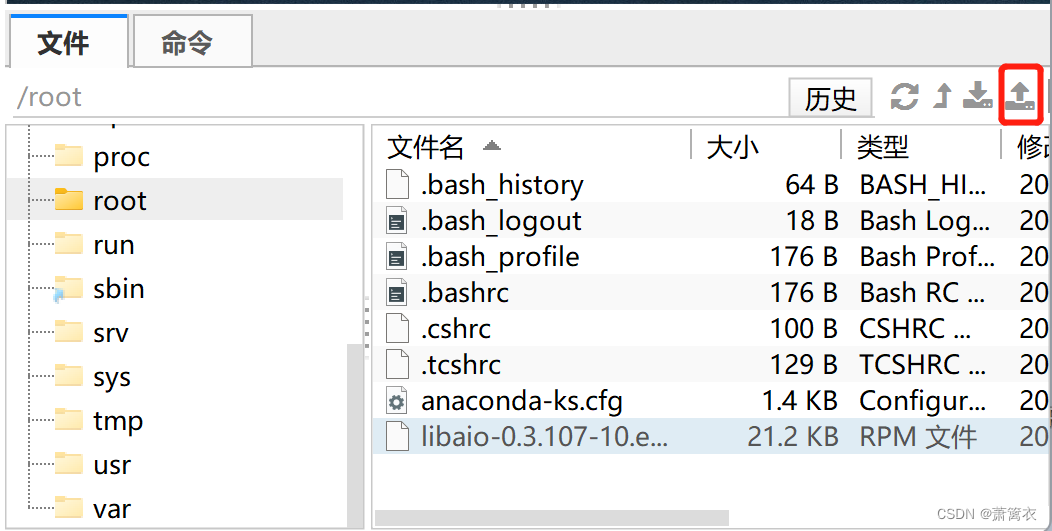
Linux: CentOS 7 install MySQL5.7
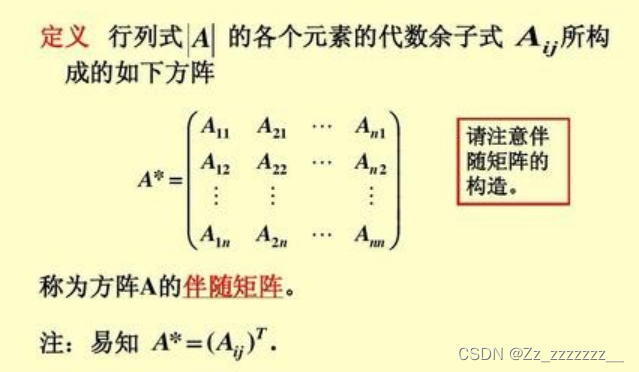
线性代数期末复习存档
随机推荐
Unit 10 Continuous Tuning
A little thought about password encryption
8581 线性链表逆置
Raj delivery notes - separation 第08 speak, speaking, reading and writing
线性代数期末复习存档
[ROS]ROS常用工具介绍(待续)
深度学习框架pytorch快速开发与实战chapter3
C语言日记 3 常量
8580 Merge linked list
Unit 8 Middleware
Error Correction Design Principle of Hamming Check Code
(ROS) (03) CMakeLists. TXT, rounding
Deep learning framework pytorch rapid development and actual combat chapter3
C语言初级—用一角,两角,五角和一元组成3.5元有多少种组合方法
verilog学习|《Verilog数字系统设计教程》夏宇闻 第三版思考题答案(第十二章)
【ROS】编译软件包packages遇到进度缓慢或卡死,使用swap
C语言日记 7 输入/输出格式控制
C语言一级指针(补)
C语言——断言assert的使用
Unit 14 Viewsets and Routing